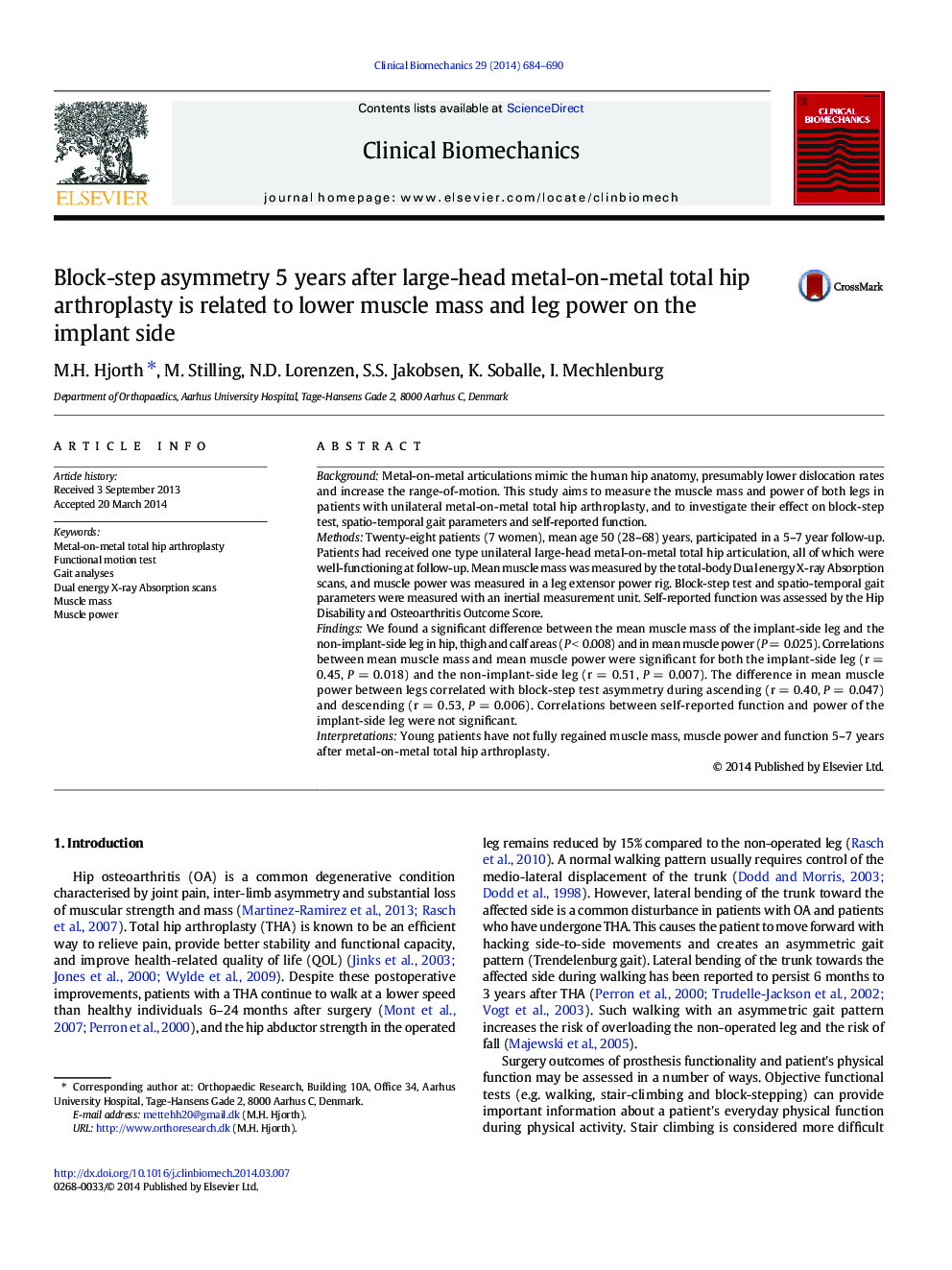| کد مقاله | کد نشریه | سال انتشار | مقاله انگلیسی | نسخه تمام متن |
|---|---|---|---|---|
| 4050439 | 1264931 | 2014 | 7 صفحه PDF | دانلود رایگان |

BackgroundMetal-on-metal articulations mimic the human hip anatomy, presumably lower dislocation rates and increase the range-of-motion. This study aims to measure the muscle mass and power of both legs in patients with unilateral metal-on-metal total hip arthroplasty, and to investigate their effect on block-step test, spatio-temporal gait parameters and self-reported function.MethodsTwenty-eight patients (7 women), mean age 50 (28–68) years, participated in a 5–7 year follow-up. Patients had received one type unilateral large-head metal-on-metal total hip articulation, all of which were well-functioning at follow-up. Mean muscle mass was measured by the total-body Dual energy X-ray Absorption scans, and muscle power was measured in a leg extensor power rig. Block-step test and spatio-temporal gait parameters were measured with an inertial measurement unit. Self-reported function was assessed by the Hip Disability and Osteoarthritis Outcome Score.FindingsWe found a significant difference between the mean muscle mass of the implant-side leg and the non-implant-side leg in hip, thigh and calf areas (P < 0.008) and in mean muscle power (P = 0.025). Correlations between mean muscle mass and mean muscle power were significant for both the implant-side leg (r = 0.45, P = 0.018) and the non-implant-side leg (r = 0.51, P = 0.007). The difference in mean muscle power between legs correlated with block-step test asymmetry during ascending (r = 0.40, P = 0.047) and descending (r = 0.53, P = 0.006). Correlations between self-reported function and power of the implant-side leg were not significant.InterpretationsYoung patients have not fully regained muscle mass, muscle power and function 5–7 years after metal-on-metal total hip arthroplasty.
Journal: Clinical Biomechanics - Volume 29, Issue 6, June 2014, Pages 684–690